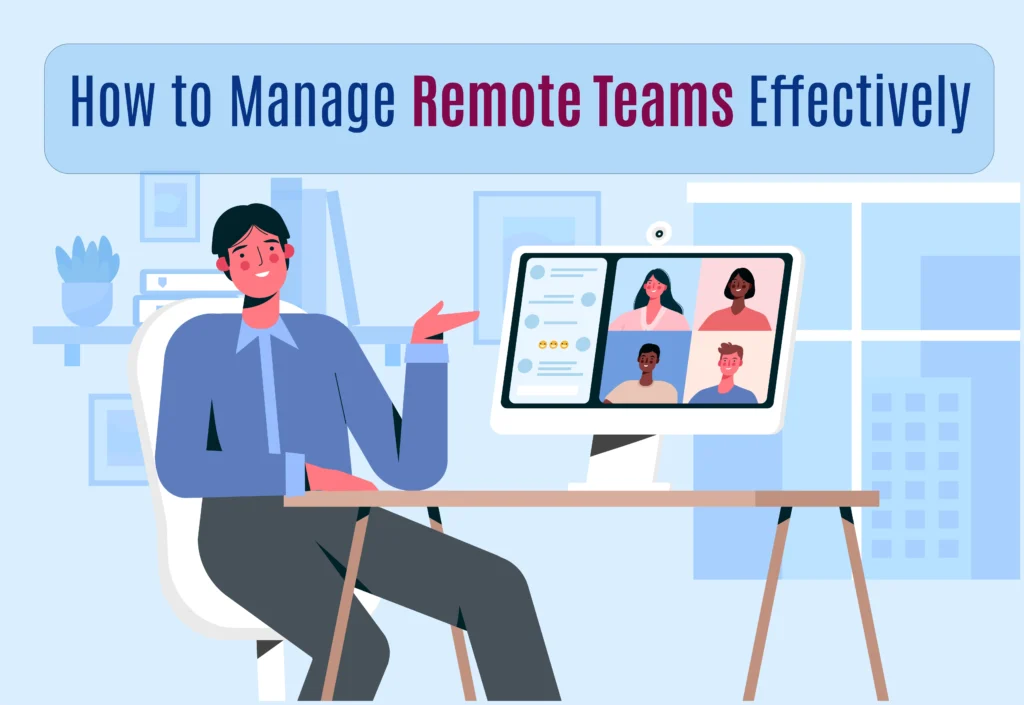How to Deal with Difficult Employees as a Manager
Managing a team comes with many challenges, and one of the most difficult tasks for any manager is dealing with difficult employees. Whether it’s poor performance, a negative attitude, or resistance to change, these behaviors can disrupt productivity, damage team morale, and create a tense work environment. However, handling these situations effectively is crucial for maintaining a healthy, high-performing team.
Difficult employees aren’t necessarily bad employees. Often, their behavior is a symptom of deeper issues, such as unclear expectations, personal struggles, or unresolved conflicts. With the right approach, managers can guide these individuals toward improvement while fostering a positive workplace culture. This blog will provide a detailed guide on recognizing different types of difficult employees, key strategies for addressing problematic behavior, and how to foster a productive work environment that minimizes conflict.

Recognizing Different Types of Difficult Employees
The first step in dealing with difficult employees is understanding the different types of behavior that can cause disruptions. Not all difficult employees are the same, and identifying the specific challenges they present is key to addressing the problem effectively.
The Underperformer
One of the most common challenges managers face is dealing with underperformers. These employees consistently fail to meet deadlines, produce subpar work, or require constant supervision. Underperformance can stem from a variety of factors—lack of skills, unclear expectations, or personal issues.
Managers need to address this directly by setting clear, measurable goals and providing the necessary resources for improvement. It’s also important to assess whether the employee has received adequate training and support. Sometimes, underperformance is a sign that the employee is in the wrong role, and a reassignment might be the best solution.
The Negative Attitude
Another challenge is dealing with employees who bring a negative attitude to work. These individuals might complain frequently, spread gossip, or resist team-building efforts, which can undermine morale and create a toxic environment. Negativity can spread quickly in a team setting, making it essential for managers to address the issue early.
It’s crucial to differentiate between an employee going through a tough time personally and someone who consistently projects negativity. Addressing the issue involves a one-on-one conversation to explore what’s driving their attitude and offering support if necessary. At the same time, the manager must set boundaries, making it clear that negative behaviors will not be tolerated.
The Overly Critical Employee
Some employees are not just negative—they’re overly critical of their colleagues or even management. These individuals can be disruptive, as their critical nature may discourage others from contributing ideas or engaging fully with the team. While constructive criticism is valuable, overly critical employees often fail to deliver feedback in a respectful or productive manner.
The key to managing overly critical employees is redirecting their feedback into constructive channels. Encourage them to voice their concerns in a solution-oriented way and ensure they understand that while feedback is welcome, it must be framed respectfully.
The Resistant to Change
Change is a constant in the workplace, but some employees struggle with it. Resistance to change is common, especially in industries that evolve rapidly. These employees may push back against new processes, resist adopting new technology, or refuse to collaborate on change initiatives. Resistance can stem from fear, discomfort, or a lack of understanding.
Managing these employees requires clear communication about the reasons for change and the benefits it will bring. Involve them in the process by seeking their input, addressing concerns, and offering training or resources to ease the transition.
Key Strategies for Addressing Difficult Behavior
Once you’ve identified the type of difficult behavior, the next step is to implement strategies to address it. Managers must approach these situations with professionalism, fairness, and a willingness to engage in dialogue.
Setting Clear Expectations
Many performance or behavior issues arise from a lack of clear expectations. Employees may not understand what is required of them or may have misinterpreted their role. Setting clear, specific expectations from the outset is crucial to avoiding these misunderstandings. When employees know exactly what is expected, they are more likely to meet those standards.
Managers should communicate these expectations clearly and ensure they are understood. This includes defining the scope of the employee’s responsibilities, outlining performance metrics, and setting deadlines. In the case of behavioral issues, it’s important to set expectations for appropriate workplace behavior, making it clear that any deviation will be addressed.
Providing Constructive Feedback
Providing regular constructive feedback is essential for managing difficult employees. Feedback should focus on specific behaviors rather than attacking the person’s character. For example, rather than saying, “You’re always negative in meetings,” a more effective approach would be, “I’ve noticed that in the last few meetings, your comments have focused on the downsides of each proposal. I’d like to hear your thoughts on possible solutions or alternatives.”
Constructive feedback is not just about pointing out what’s wrong—it’s also about providing actionable steps for improvement. Offer suggestions for how the employee can correct their behavior or performance and make it clear that you’re there to support them in this process.
Actively Listening and Understanding the Root Cause
Sometimes, the most difficult employees are those who feel misunderstood or unheard. Active listening is key to getting to the root cause of their behavior. Rather than jumping straight into disciplinary action, take the time to sit down with the employee and ask open-ended questions about what’s going on.
Are there personal issues affecting their work? Do they feel unsupported or disengaged? Is there something about the work environment that’s contributing to their negative behavior? By understanding the underlying causes, you can work together to find solutions that address both the symptoms and the root problem.
Creating an Action Plan for Improvement
Once you’ve identified the issue and discussed it with the employee, the next step is to create a clear action plan for improvement. This plan should outline specific, measurable goals, and a timeline for achieving them. For example, if an employee has been underperforming, the plan might include targets for improving output or meeting deadlines, along with regular check-ins to track progress.
Make sure the employee understands their role in the improvement process and feels supported. Offer resources such as additional training, mentorship, or coaching. A written action plan also serves as documentation in case further steps need to be taken if the employee fails to meet expectations.
≫ Related Post: How to Give Constructive Feedback to Employees
Building Emotional Intelligence in Managing Conflict
Managing difficult employees often involves conflict, and emotional intelligence is a critical tool for handling these situations with grace and effectiveness. Emotional intelligence enables managers to manage their own reactions, understand the emotions of others, and resolve issues calmly and effectively.
Staying Calm and Objective
When dealing with difficult employees, it’s important for managers to stay calm and objective. Letting emotions take over can lead to poor decisions and escalate the situation. Managers should approach these conversations with a clear, level-headed mindset and focus on the facts.
Staying calm also helps to de-escalate the situation. Employees who are defensive or emotional will respond more positively to a manager who remains composed. Maintaining objectivity ensures that the manager is fair and balanced in their approach, which helps build trust and credibility with the employee.
Using Empathy to Address Issues
Empathy is one of the most powerful tools a manager can use when dealing with difficult employees. It allows the manager to understand the employee’s perspective and see the situation through their eyes. This doesn’t mean excusing bad behavior, but it does mean acknowledging the employee’s emotions and showing that you’re genuinely interested in helping them succeed.
For example, if an employee is resistant to a new process because they feel overwhelmed, an empathetic response would involve acknowledging their concerns, offering additional support or training, and working together to find a solution.
Recognizing When to Involve HR
While most issues can be handled directly between the manager and the employee, there are times when it’s necessary to involve HR. If an employee’s behavior is not improving despite multiple interventions, or if the issue involves harassment, discrimination, or serious misconduct, HR should be involved to ensure that the situation is handled according to company policy and legal requirements.
HR can also provide support in documenting performance issues, implementing formal improvement plans, and facilitating difficult conversations. Involving HR early in the process can help prevent problems from escalating and ensure that all actions are taken fairly and legally.
Preventing Future Issues by Fostering a Positive Work Environment
While it’s important to address difficult behaviors as they arise, prevention is always better than cure. By fostering a positive work environment, managers can minimize the likelihood of conflicts and difficult behavior in the first place.
Encouraging Open Communication
One of the best ways to prevent problems from escalating is by fostering a culture of open communication. When employees feel comfortable speaking up about their concerns, frustrations, or challenges, they are less likely to act out in negative ways. Managers should regularly check in with their teams, encourage feedback, and create a safe space for employees to voice their opinions.
Open communication also helps to prevent misunderstandings and ensures that small issues are addressed before they become bigger problems. When employees know that their voices are heard, they are more likely to feel valued and engaged.
Recognizing and Rewarding Positive Behavior
Recognition is a powerful motivator. Employees who feel appreciated are more likely to stay engaged and committed to their work. By recognizing and rewarding positive behavior, managers reinforce the behaviors they want to see, making it clear to the rest of the team what is valued in the workplace.
Recognition doesn’t always have to come in the form of monetary rewards—it can be as simple as a public acknowledgment in a meeting, a personal thank-you note, or offering new opportunities for growth. By creating a culture of recognition, managers can boost morale and minimize negative behaviors.
Promoting Team Collaboration and Inclusion
Another way to prevent difficult behaviors is by promoting team collaboration and inclusion. Employees who feel like valued members of a team are less likely to act out or disengage from their work. Encourage teamwork, facilitate cross-functional collaboration, and promote a sense of belonging within the organization.
Creating opportunities for team bonding, such as team-building activities or informal social events, can help foster stronger relationships and reduce interpersonal conflicts. When employees feel connected to one another, they are more likely to work together harmoniously and less likely to create friction.
Handling Difficult Situations: Real-World Examples
Let’s explore some real-world examples of how managers have successfully handled difficult employees.
Case Study: Managing a Chronically Late Employee
In one example, a manager was dealing with an employee who was consistently late to work. The employee had a good work ethic but struggled with punctuality, which was beginning to affect team performance.
The manager addressed the issue by having a private conversation with the employee, outlining how their tardiness was affecting the team and setting clear expectations for future punctuality. Together, they created an action plan that included setting alarms, adjusting the employee’s commute time, and offering flexibility for occasional challenges. Over time, the employee improved their punctuality, and the team’s productivity increased.
Case Study: Resolving Interpersonal Conflict Between Team Members
In another instance, two employees were in constant conflict, which was affecting the overall team dynamic. The manager held individual meetings with each employee to understand the root of the issue and then facilitated a mediation session where both employees could express their concerns openly. Through this process, the manager was able to establish common ground and create a plan for the employees to work more collaboratively.
By addressing the conflict head-on and fostering open communication, the manager was able to resolve the issue and create a more harmonious working environment.
Final Steps: Knowing When It’s Time for Formal Action
While many issues can be resolved through coaching, feedback, and support, there are times when formal action is necessary. Managers need to recognize when an employee’s behavior is not improving despite multiple interventions and when more serious steps must be taken.
Documenting Performance Issues
If an employee’s behavior continues to be problematic, it’s important to document all relevant incidents, feedback sessions, and action plans. This documentation is crucial for creating a clear record of the employee’s performance and the steps taken to address the issue.
Documenting performance issues ensures that there is a transparent, consistent process in place if formal disciplinary action is required. It also protects both the manager and the organization in case of legal disputes.
Taking Disciplinary Action as a Last Resort
When all other avenues have been exhausted, it may be necessary to take formal disciplinary action, such as issuing a warning, placing the employee on a performance improvement plan (PIP), or in extreme cases, termination. Disciplinary action should always be the last resort, after the manager has made every effort to help the employee improve.
When taking disciplinary action, it’s important to follow company policies and consult with HR to ensure that the process is fair and compliant with legal requirements. While this step is never easy, it’s sometimes necessary to protect the integrity of the team and the organization.
Conclusion: The Importance of Consistent, Fair Leadership
Dealing with difficult employees is one of the most challenging aspects of being a manager, but it’s also one of the most important. Addressing these issues promptly and fairly not only improves individual performance but also helps create a more positive and productive work environment for the entire team.
By recognizing the different types of difficult employees, setting clear expectations, providing constructive feedback, and fostering open communication, managers can guide employees toward improvement. Building emotional intelligence and empathy, combined with a structured approach to handling conflicts, ensures that managers are well-equipped to handle even the toughest employee situations.
Ultimately, a manager’s ability to deal with difficult employees is a reflection of their leadership skills. Consistency, fairness, and a focus on fostering a positive work environment will not only resolve conflicts but also prevent them from arising in the first place.
















